 Just like clockwork, July 2nd brought the first measurable rain. And so it begins, monsoon at Grand Canyon National Park as seen from the North Rim Grand Lodge.
Just like clockwork, July 2nd brought the first measurable rain. And so it begins, monsoon at Grand Canyon National Park as seen from the North Rim Grand Lodge.
Join others that look to the sky at SkyWatch Friday.
 Just like clockwork, July 2nd brought the first measurable rain. And so it begins, monsoon at Grand Canyon National Park as seen from the North Rim Grand Lodge.
Just like clockwork, July 2nd brought the first measurable rain. And so it begins, monsoon at Grand Canyon National Park as seen from the North Rim Grand Lodge.
Join others that look to the sky at SkyWatch Friday.
 Think spring and fall to hike smart in Grand Canyon. Summer temperatures deep within the canyon often exceed 100 F (38 C). This view of the North Kaibab Trail down Roaring Springs Canyon was taken in August when by 8am the trail below was already exposed to sun. I wouldn’t normally hike the inner canyon this time of year but was headed first to Cottonwood Camp for the night, only 7 miles down, and then on to Phantom Ranch in the early morning to begin an experience of a lifetime rafting the Colorado River.
Think spring and fall to hike smart in Grand Canyon. Summer temperatures deep within the canyon often exceed 100 F (38 C). This view of the North Kaibab Trail down Roaring Springs Canyon was taken in August when by 8am the trail below was already exposed to sun. I wouldn’t normally hike the inner canyon this time of year but was headed first to Cottonwood Camp for the night, only 7 miles down, and then on to Phantom Ranch in the early morning to begin an experience of a lifetime rafting the Colorado River.
The North Kaibab Trail is 14 miles to the river with a change of about 6,000 feet (1828 meters) in elevation so begins in a forest and descends into desert getting warmer by about 5 F (15 C) every 1000 feet (304 meters).
Summer hiking in Grand Canyon requires early morning and late afternoon travel with at least three liters of water for each hiker. Keep hydrated and eat plenty of salty snacks. Stay in the shade and/or near water between 11am and 4pm. Know your limits because this is a very challenging hike.
For more information about hiking the inner canyon go to the Grand Canyon National Park website. And have a great hike!
Last week I thought I’d see flowers while wandering the Walhalla but not so much. This week I saw a combination of flowers and fossils along the Arizona Trail.
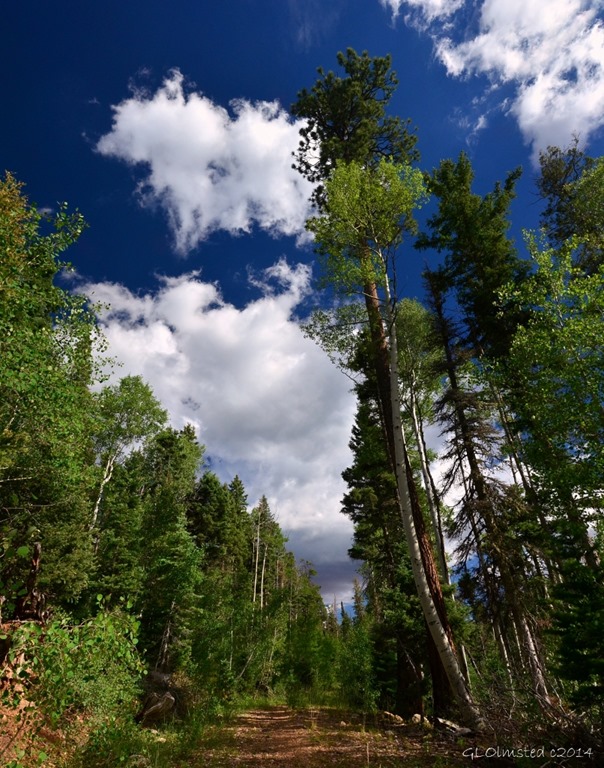 I love to stroll through the forest stopping frequently to look and photograph everything along the way. The Arizona Trail runs 800 miles north to south, border to border, across Arizona and Grand Canyon. I have no plans to hike the entire length but there are convenient places to pick up the trail in the park and forest. Unfortunately this stretch of old two-track is never far from the road and sounds that go with it. Maybe it’s the original road.
I love to stroll through the forest stopping frequently to look and photograph everything along the way. The Arizona Trail runs 800 miles north to south, border to border, across Arizona and Grand Canyon. I have no plans to hike the entire length but there are convenient places to pick up the trail in the park and forest. Unfortunately this stretch of old two-track is never far from the road and sounds that go with it. Maybe it’s the original road.
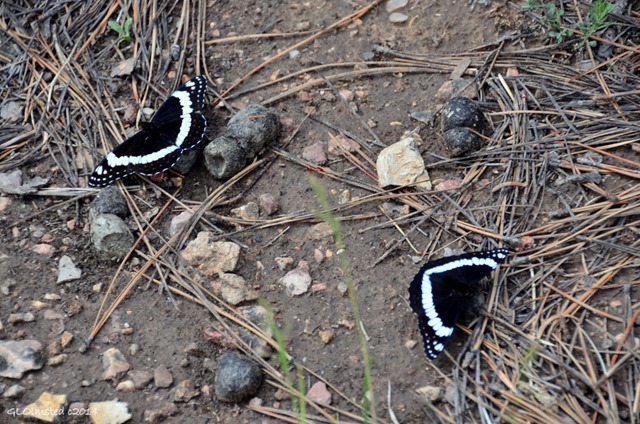 It makes a good byway for many animals as I saw from their scat left behind.
It makes a good byway for many animals as I saw from their scat left behind.
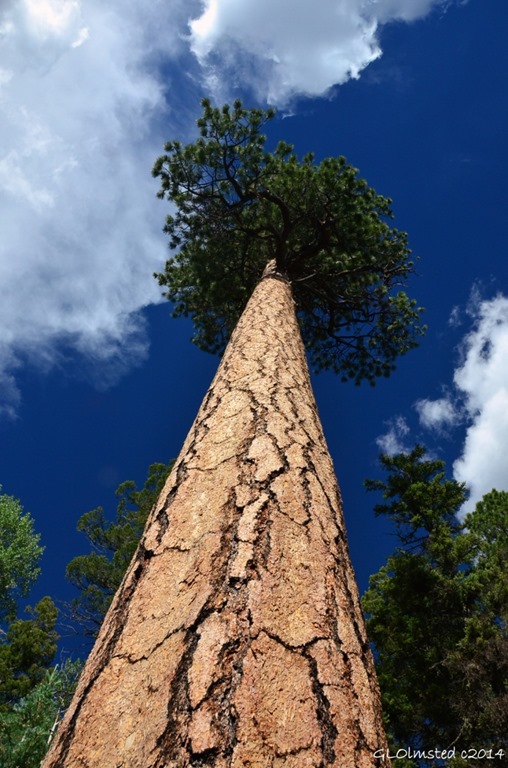 But even with that I heard birds tweeting, chipping, chirping, singing and tapping all around yet barely saw more than a swift view disappearing into the forest. Oh, and a raven flying over.
But even with that I heard birds tweeting, chipping, chirping, singing and tapping all around yet barely saw more than a swift view disappearing into the forest. Oh, and a raven flying over.
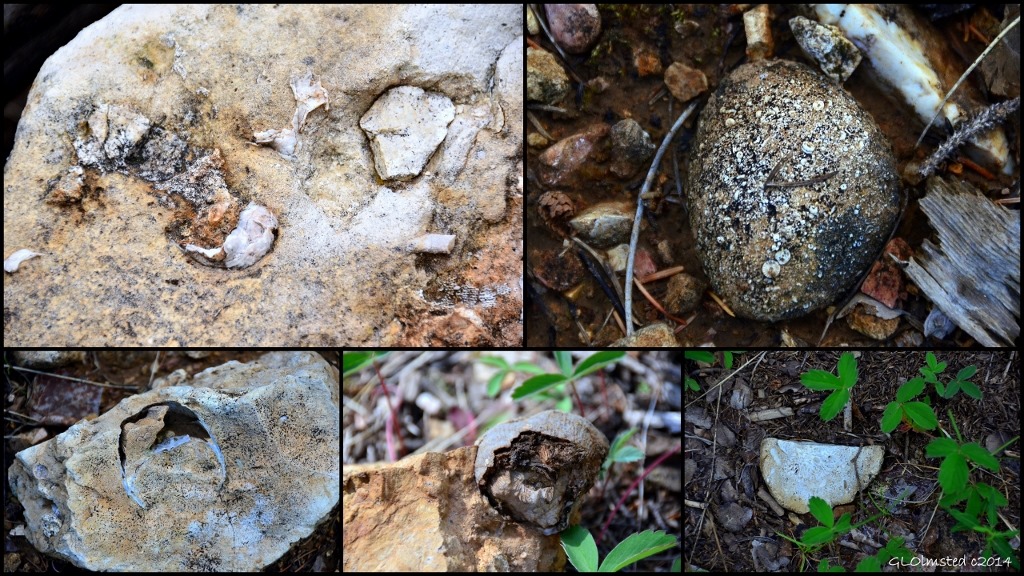 So I settled with searching for fossils of which there are many in this ancient seabed of 270 million year old Kaibab limestone. Looking down closely certainly slowed my pace.
So I settled with searching for fossils of which there are many in this ancient seabed of 270 million year old Kaibab limestone. Looking down closely certainly slowed my pace.
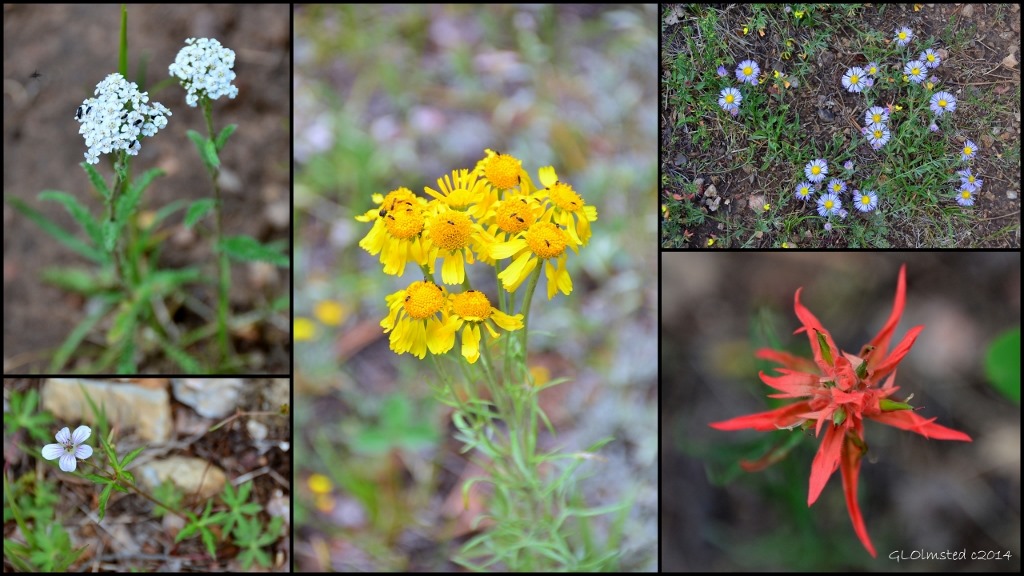 Which also allowed me to notice all the colorful wildflowers, mostly small with paintbrush the tallest when hiding in the shade. Pussytoes, sandwort, asters and more.
Which also allowed me to notice all the colorful wildflowers, mostly small with paintbrush the tallest when hiding in the shade. Pussytoes, sandwort, asters and more.
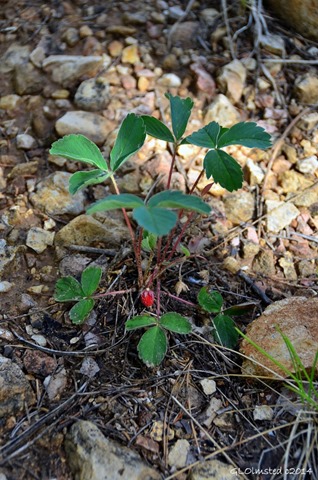 Plus one tiny wild strawberry which I ate immediately after the photo. Oh so sweet.
Plus one tiny wild strawberry which I ate immediately after the photo. Oh so sweet.
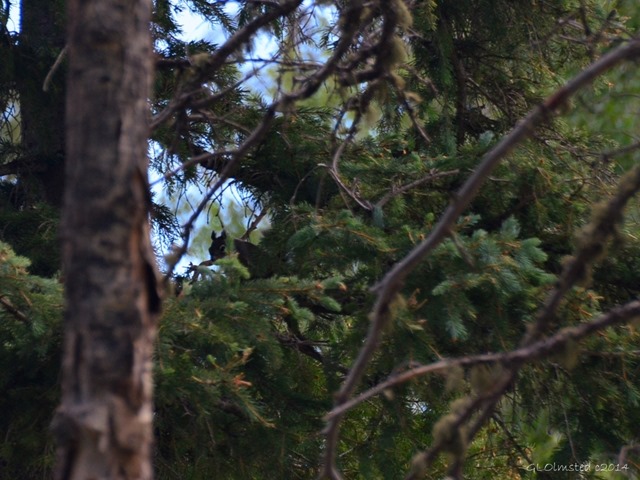 Every time I stopped to admire and take a photo there seemed to be a squirrel scolding me, as if to say move on, move on.
Every time I stopped to admire and take a photo there seemed to be a squirrel scolding me, as if to say move on, move on.
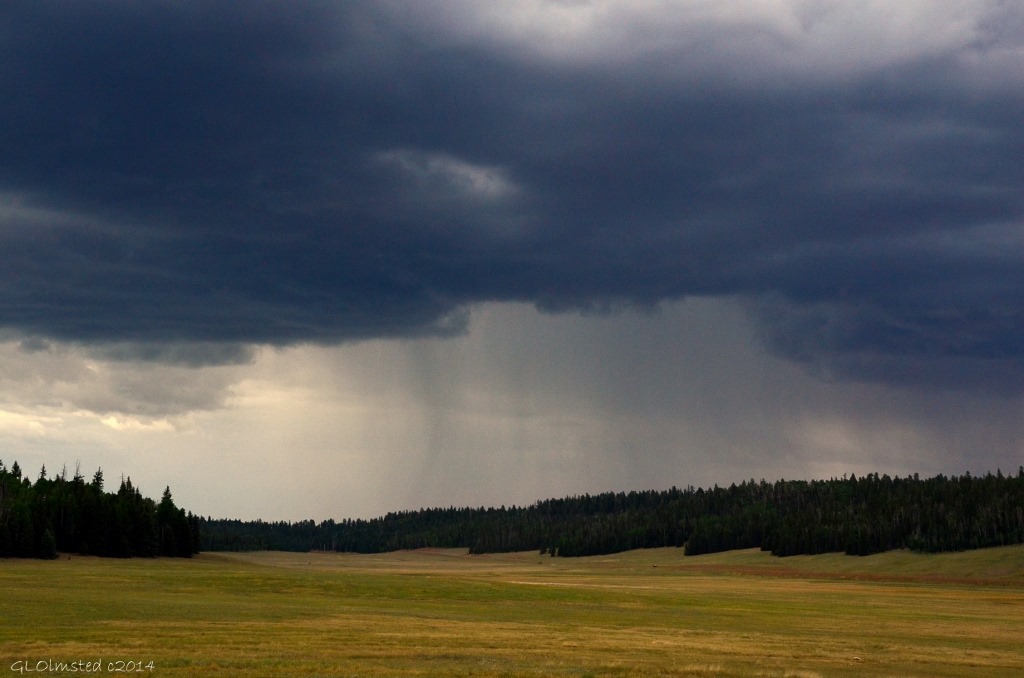 This was a delightful two hour walk and I probably didn’t even go a whole mile. But did feel like I earned dinner at Kaibab Lodge while watching a storm approach.
This was a delightful two hour walk and I probably didn’t even go a whole mile. But did feel like I earned dinner at Kaibab Lodge while watching a storm approach.
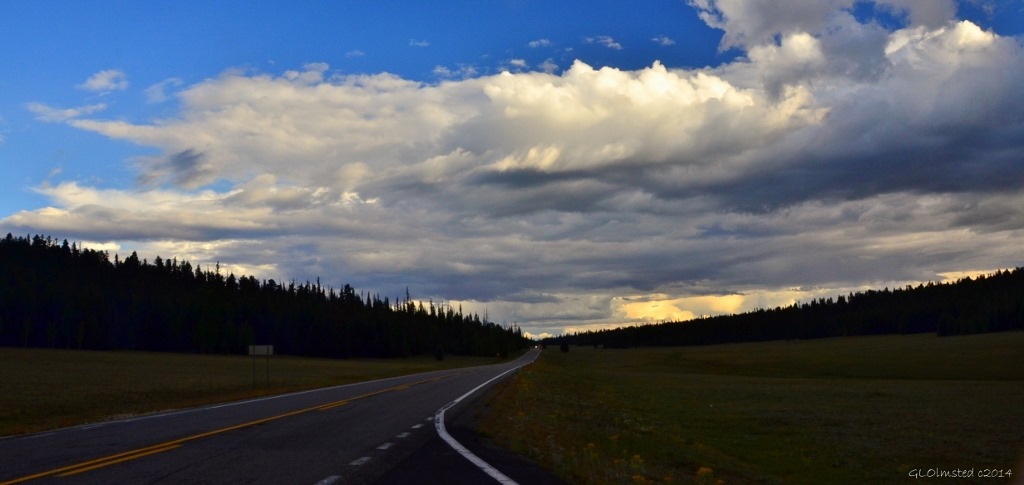 And on my way home saw lightning way off in the distance. And later a little rain fell.
And on my way home saw lightning way off in the distance. And later a little rain fell.